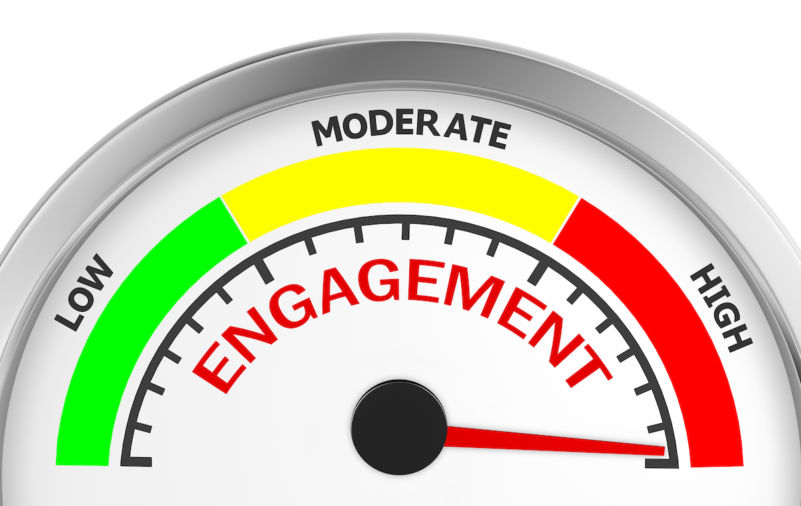Times are uncertain. Inflation is at a 40-year high and heading towards 13%. The Bank of England forecasts a UK recession to last at least a year. The cost of living crisis is being hyped up as the big news story now that the media have tired of COVID. All of this will be affecting the mental wellbeing of your staff.
We suggest focusing on staff engagement. After all, happy staff are more productive. And you’re more likely to retain your A-Players. If we’re heading into a period of contraction, you need everyone to pull together to help weather the storm. This isn’t going to happen if you’re on an unhappy ship.
Last week I said something in my blog that may be controversial. When times are tough, you’ll find it easier if you get your staff back to the office. This isn’t about command and control. It’s about culture and behaviour. You need to reduce anxiety and make it easier for communication to flow more readily. It’s much better if you’re face-to-face.
With this in mind, what can you do to improve staff engagement?
1. Measure it

How do you know if you have an engagement problem if you don’t measure it? And how will you know if your actions are making a difference? The first place to start is a good metric.
Many companies use eNPS, the employee version of Fred Reichheld’s Net Promoter Score. This asks staff, ‘Would you recommend company X to a friend or colleague?’ on a scale of 1 – 10. The thing is, we can’t find any evidence that there’s a correlation between high scores for eNPS and employee engagement.
We’re not the only ones that think this. Julian Birkinshaw, Professor of Strategy and Entrepreneurship at the London Business School, said the same thing when I interviewed him for our Melting Pot podcast. He suggested the question should be changed to ‘Would you recommend your manager to a friend or colleague?’ which I like. It reflects that a team member’s day-to-day experience of culture is profoundly influenced by how they’re managed and the team they’re in. Another podcast guest, John Ratliff, former founder of Appletree Answers, said that when he changed the question to ‘How happy are you at Appletree Answers’, he got a correlation with engagement.
This is why we recommend Friday Pulse to our clients. Nic Marks, the founder and CEO, says a weekly check-in on happiness is the best way to monitor staff engagement. He has shown direct correlations between an improvement in happiness and better retention and productivity.
2. Clarity over expectations
Talking of correlations, here’s another one. The more your staff know what’s expected of them at work, the more engaged they will be. So important is this to engagement, Gallup put the question, ‘Do you know what’s expected of you at work’ first in a list of 12 for their Gallup Q12.
Clarity of expectation is rare in most of the businesses I come across. I say to people, ‘Let’s imagine 5 o’clock coming around. Do you know if you’ve had a good day? Do you believe you’ve invested more than half of your time in the things that make you an A-Player?’ Mostly I get blank looks.
Our solution? Job scorecards. For each role, sit down and see how much you invest. And how you measure a return on that investment. What’s the number one metric that, a year from now, will demonstrate that someone in this role is an A-Player? And what three of four subsidiary metrics could you measure to give the role some granularity? Maybe some leading indicators of performance rather than just lagging?
3. Have a purpose and BHAG
Engagement in staff should be rooted in the sense that you’re in it together. You have a common bond that motivates you to get up in the morning and do good work. This common bond is your purpose and BHAG.
Where I’ve worked in high-functioning cultures, our aim was always to give fulfilment to our staff. We’ve used Dan Pink’s formula for motivation, ‘Purpose, Autonomy and Mastery’. If you can line up talented people who share your purpose, you’ll retain that talent, and they’ll remain motivated and engaged.
It’s crazy to say a leader’s job is to motivate their people. I believe you need to hire self-motivated people who align with your purpose. Then make sure they don’t get bogged down in meaningless processes and procedures so intensely irritating that they leave.
4. Use OKRs
So you’ve clarified expectations and worked out a motivating purpose and BHAG. The next step is to set quarterly objectives for the organisation and team members so that people can see how their work contributes directly to fulfilling that mission.
Far too often, we see people just going through the motions in their jobs. They turn up, do a day’s work and then leave. Usually, they’re entirely reactive to emails and phone calls. Their company does not understand customer profitability, so they’ve spent their entire day on unprofitable customers. And they’ve inadvertently ignored a customer with huge potential to grow their revenue.
Sound familiar? Then step back and work out the priorities for change. And set some OKRs to do things differently. This will make work much for satisfying for your staff. Transparency of communication around these OKRs is critical.
5. Get rid of unnecessary rules and bureaucracy
What’s likely to cause a dive in engagement? Unnecessary rules and bureaucracy. You know what a great job looks like now. So what is it that’s getting in people’s way? Do they have the tools that they need to do a great job? Maybe it’s a lack of time. Is it even possible to achieve their OKRs given the current resources available? Front-line teams will know what’s preventing them from doing a good job. They often build processes to work around these things.
At Rackspace and Peer 1, we’d go out of our way to remove little annoyances and irritations that drain energy and engagement. We gave new members of staff a little black book and told them we valued their fresh perspectives. Then, we asked them to write down anything that seemed odd or stupid, no matter how small. I would review these notes monthly during lunch with every team member of fewer than six months tenure. We also had an open email address (stupidrules@) and gave a £10 Amazon voucher to anyone who flagged up stupid rules or suggested a way we could improve. And we acted and gave feedback publicly on all of these.
6. Put in a regular meeting rhythm

Then we come to my main mantra – set a rhythm. Daily, weekly, monthly and quarterly – a regular meeting rhythm will make a huge difference to engagement. Shift from an annual cycle to a quarterly one. If you measure things every year, it’s all too easy for stuff to get put off for another day. Important priorities get swallowed up in the distractions of a busy job, and progress slows to a halt.
With a quarterly rhythm, your year becomes 90 days, and your month becomes a week. As you discuss your weekly milestones, you’re constantly bringing the team’s focus back to things they depend on one another to do. This ensures commitments don’t get lost or forgotten. It also gives regular opportunities to voice the stucks and the barriers to progress. And then work out ways around them.
7. Ensure every manager is an A-Player
We’re a big fan of regular talent assessment. Start with the executive and management team. Every one of them needs to be an A-Player. This is important as it dramatically affects engagement throughout the business. In their research, Gallup discovered that 85% of engagement scores are driven by the manager or team leader.
A-Player managers will act like coaches for their teams. Instead of telling people what to do, they will listen, observe and be supportive. And in turn, their teams will be happier and more productive. Every staff member should attend at least one daily stand-up and weekly team meeting. Good managers will ensure these happen like clockwork.
8. Give regular praise and recognition
One surefire way to improve engagement is to get good at praise. And not just occasionally. Make it a regular part of your day. Organisations should share recognition internally and from customers. This is one of the benefits of introducing something like NPS to measure customer engagement. When you score 9s and 10s, you’ll get positive customer comments that you can feed into team meetings and 1:1s.
Gallup says that praise needs to happen at least every week. If you stopped a staff member in a corridor and asked them, they should easily recall the last time they received recognition. This doesn’t have to be from their boss. It could be from their peers. If it’s only ever the managers, this places too heavy a burden on them.
Praise is a cultural thing. And it comes down from the top. Some CEOs say to me, ‘How can I always praise people?’ That rings immediate warning bells in my head. My first thought is, ‘I bet they don’t have A-Players in their team’.
Make recognition and celebration part of your mode of operating. Start every meeting with good news. Encourage people to call someone out for doing something great. Systematise it. Even cynical buggers like me like praise! I get regular messages about my book, podcast and articles. It takes time and effort, but it makes it all worthwhile when someone says, ‘That was just what I needed to read.’
Written by business coach and leadership coaching expert Dominic Monkhouse. Contact him to schedule a call here. You can order your free copy of his book, Mind Your F**king Business here.

